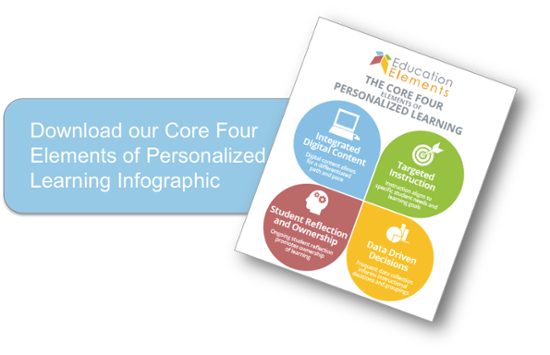It’s hard to believe that a new school year is already here! Going back to school is an exciting time for everyone. Students are eager to get new school supplies; parents can get back to their normal routines; and teachers have new rosters, clean classrooms and fresh ideas. It also means that Back-to-School Night is just around corner!
Back-to-School Night is a prime opportunity for teachers and parents to begin building relationships and set up engagement opportunities such as potlucks, home visits, literacy nights and more. Recently, I started thinking about how to approach Back-to-School Night differently in order to maximize its potential to engage families and demonstrate modern-day instructional practices.
When I was a classroom teacher, I just wanted to get through this event so I could focus on lesson planning and teaching. Yet afterwards, I always felt proud about all the information I managed to present in such a short time to my students’ families. I told them about my personal background, classroom expectations, rules, upcoming book reports, requests for supplies and more! In fact, it seemed my welcome packet and presentation were so comprehensive that, when I would ask for questions at the end of my presentation, no one said a word...
It took me a few years to recognize that the sound of crickets was not what I was after. I realized that I was not actually inviting parents to have a role in my classroom--I was simply telling them what I was doing and expected their acceptance. After that realization, I started to reevaluate my approach to family engagement.
Research has long supported the importance of family engagement on student success. For example, DropOutPrevention.org highlights that family engagement in school positively impacts student achievement, attendance and graduation rates. However, family engagement for many educators often only involves specific requests such as field trip chaperoning or bad behavioral news. As a teacher, I treated this as family engagement. Similar to how teachers fall into the trap of just "delivering" knowledge to students, I was just delivering information to parents--not authentically engaging them.
Teachers employ a variety of family engagement strategies that range from grading homework to home visits. But which family engagement strategies have the most impact? A special report from the U.S. Department of Education Office of Innovation and Improvement, titled “Partners in Education: A Dual Capacity-Building Framework for High Impact Family Engagement,” emphasizes that in order to be effective, family engagement must be relational, build capacity of families and staff, be collaborative and link to learning.
Additionally, The Parent-Teacher Home Visit Project illustrates that there exists a spectrum of family engagement practices, from low impact to high impact. Popular approaches such as potlucks, assistance on administrative tasks and conferences have lower effects, while modeling instructional support strategies is one of the highest impact practices.
To be involved in their children's educational journey, parents/guardians need to be engaged in learning experiences that help them understand the classroom experience. Students today are learning in different ways than how most of us were taught in school. Similarly, the increasing use of devices, digital tools and online learning activities may have parents scratching their heads, wondering, “How can I best support my child this year?” and “What does learning look like in this classroom?”
I advocate that we toss out the traditional stand-and-deliver mode of talking to parents during Back-to-School Night and show them these answers by using a personalized learning model to deliver the content and invite parent/guardian participation.
While you can set up your personalized learning simulation using a range of instructional models, here is a template that will expose families to a three-station rotation model.
I think this model is a great approach for Back-to-School Night, as each station has a different objective and desired outcome, optimizing time and content delivery. Additionally, parents/guardians will participate in a range of learning environments (collaborative, one-to-one, direct instruction) and begin to appreciate the freedom and agency that personalized learning allows. As you explore the template above, feel free to change the content of each station to best fit your classroom, keeping in mind the dual goals of engaging parents and modeling classroom instruction.
Public education is becoming increasingly personalized for students, often through the use of technology. By providing a personalized Back-to-School Night, teachers can authentically engage families in a way that helps them to both understand the 21st Century Classroom and support their kids with excellent learning experiences.





